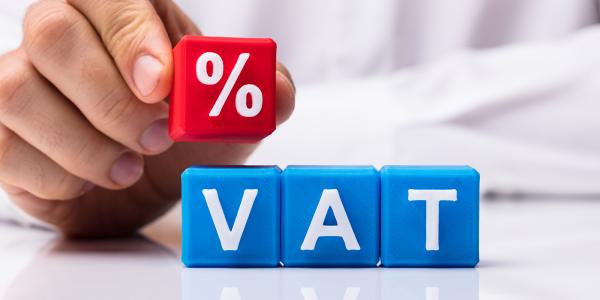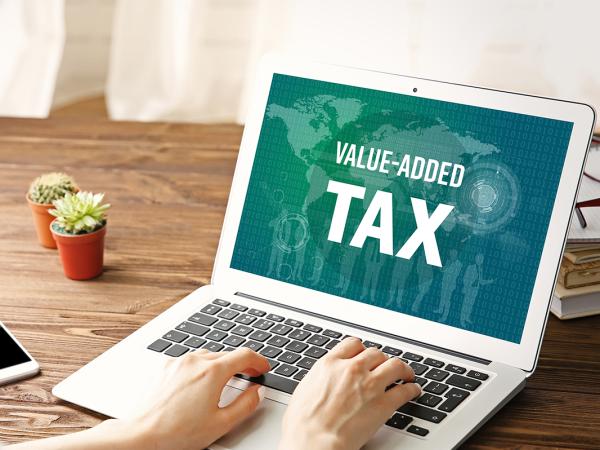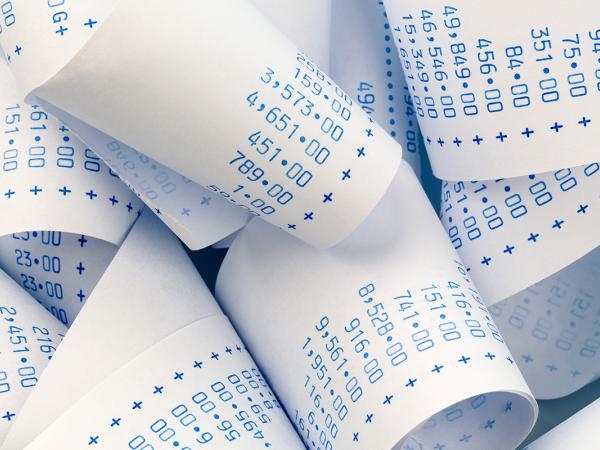VAT when running a business
VAT is a complex tax that attracts strict penalties. On this page, we take you through some of the various VAT related issues you may have when in business as a sole trader, partnership or limited company. Please note we give no more than an overview here.

Content on this page:
Overview
Not all businesses need to be registered for VAT. Our introductory page, Value-added tax (VAT), explains what VAT is and the current rates of VAT.
Below we explain when you may have to become a VAT-registered trader and outlines what you have to do when you are VAT registered. To see how VAT works in practice, have a look at the example Johnny on our page Gig work and the flat rate VAT scheme.
Charging VAT on sales
Not all sales are liable to VAT. Some traders are not registered for VAT because their businesses have sales (turnover) below the VAT registration threshold and so they cannot charge VAT on their sales (unless they decide to register voluntarily – see the heading below: Voluntary registration). Also some business activities do not attract VAT.
You must start charging VAT at the appropriate rate on taxable sales once you are a VAT registered trader. This can be as a consequence of either compulsory or voluntary registration.
Compulsory registration
You must consider whether you are legally obliged to register for VAT (this is compulsory registration).
There are two separate tests for compulsory VAT registration.
Test 1
Each month you need to total your sales for the month. You then need to keep a 12 month running total, that is, the total amount for that month and the preceding 11 months of your VAT taxable turnover. For many businesses, the VAT taxable turnover and sales will be the same. When that total reaches the VAT registration threshold (£90,000 for a 12-month period ending in the 2024/25 tax year), you need to register by the end of the following month.
You must remember that you need to register for VAT if your VAT taxable turnover in any consecutive 12-month period reaches the registration limit – it is not just the level of VAT taxable turnover in your 12-month accounting period that you need to check.
Test 2
If at the start of any 30-day period you believe that your VAT taxable turnover for that 30-day period alone will exceed the VAT registration threshold (£90,000 for 2024/25), you need to register immediately.
Voluntary registration
Even if you are not required to register for VAT due to the level of your sales you may choose to register for VAT. This is known as voluntary registration.
You might want to do this because you know the VAT you pay out on your purchases will exceed the VAT you must charge on your sales and so by registering for VAT you will be able to claim regular VAT refunds.
How to register
You can find out how to register for UK VAT on GOV.UK. Most businesses have to register online for VAT. Therefore you will need government gateway log-in details to be able to register for VAT. If you don’t have these you can create a user ID when you begin the registration process. You will also need the UTR (unique taxpayer reference) for the business in order to register.
If, exceptionally, you cannot register for VAT online you will need to complete form VAT1 which you must request from HMRC’s VAT helpline.
When you register for VAT, you will also be automatically registered for ‘Making Tax Digital (MTD) for VAT’. You will have to comply with the MTD for VAT rules as soon as you are registered unless you are exempt. Therefore, unless you intend to apply for exemption from MTD for VAT you should make sure you are clear what is needed to comply with MTD for VAT in advance of registering.
We explain the process known as Making Tax Digital for VAT on our page Reporting and paying VAT. We also explain who may qualify for exemption from MTD for VAT on this page and how to apply for it.
Once you are registered for VAT you must then add VAT to your sales invoices at the appropriate rate and complete VAT returns, as we explain in the VAT returns and payment of VAT section below.
There is also general information on the records needed when you are VAT registered under the heading Record keeping for VAT below.
VAT returns and payment of VAT
Most businesses need to complete VAT returns quarterly. They must usually be completed and submitted within one month and 7 days of the end of the relevant period and payment made at the same time.
If you are a VAT registered trader, you will normally offset the VAT you have been charged by your suppliers against the VAT you have charged your customers. This is done each time a VAT return is completed. The net amount of VAT shown on your VAT return must then be paid to HMRC. If you have paid more VAT to your suppliers than you have charged to your customers, you should receive a VAT repayment from HMRC upon submitting your VAT return.
If you struggle to deal with matters digitally, then you may qualify for exemption from digital filing of your VAT returns, for example if you have a disability, or you live in an area where broadband is unreliable. If so, HMRC should offer alternative arrangements to enable you to file your returns. You should contact HMRC to discuss this.
See our page Reporting and paying VAT for more information on completing and submitting VAT returns and about exemption from digital filing.
Penalties for late filing or late payment
Penalties for not complying with the VAT system can be extensive, depending on the nature of the error. Here we look specifically at penalties for late filing of a VAT return and late payment of VAT due.
When a VAT return is filed late or a VAT payment is late, it is likely that HMRC will charge penalties. A new penalty regime has been introduced for VAT periods beginning on or after 1 January 2023. The new rules are designed to penalise those who persistently make mistakes including filing VAT returns late or paying VAT due late, rather than those who make an occasional error.
You should bear in mind that penalties can usually be appealed against if you have a reasonable excuse for the failure which led to the penalty.
Late filing penalties
Broadly, penalty points will be issued by HMRC for certain mistakes or errors such as late filing of a VAT return, and a fine will only become due once a certain number of penalty points has been reached. Penalty points automatically expire after 2 years, although they can be removed before then in certain circumstances.
For more details see GOV.UK.
Late payment penalties
Where VAT is paid late, you might be charged a late payment penalty depending on how late the payment is, together with late payment interest. This is charged at a higher rate to standard interest on late paid tax.
Late payment penalties and interest can sometimes be avoided if a ‘time to pay’ arrangement is put in place promptly.
For more details see GOV.UK.
Simplified VAT schemes
Depending on the type of business and your annual sales, you may be eligible to use a simplified VAT scheme. Below is a brief summary of the main VAT schemes that small businesses choose and where you can find further information. There are additional VAT schemes available which are not covered below; these are detailed under Different ways to account for VAT on GOV.UK.
Annual accounting
- Scheme eligibility
-
Estimated VAT taxable turnover for next 12 months is £1.35 million or less.
- Important points
-
Submit one VAT return annually.
Make advance VAT payments during the year.
Not suitable if you anticipate regular VAT repayments.
- More information
-
See GOV.UK.
Cash accounting
- Scheme eligibility
-
Estimated VAT taxable turnover for next 12 months is £1.35 million or less.
- Important points
-
VAT is calculated on actual cash receipts and payments rather than based on invoice dates.
- More information
-
See GOV.UK.
Flat rate scheme (FRS)
- Scheme eligibility
-
Estimated VAT taxable turnover for next 12 months is £150,000 (excluding VAT) or less.
- Important points
-
Pay VAT based on a fixed percentage of your sales, the percentage used depends on the business sector.
You must consider the amount of business expenditure incurred on ‘relevant goods’ to see whether the ‘limited cost business’ rules apply.
Do not claim VAT back on purchases except certain capital assets costing over £2,000.
- More information
-
See GOV.UK. Also see the heading Voluntary registration and the Flat Rate VAT scheme on our page Gig work and the flat rate VAT scheme.
Record keeping for VAT
Usually, you should keep all the information relating to your VAT return, such as business invoices and receipts, for at least six years. You should check the detailed guidance on what you need to keep and for how long on GOV.UK.
If you must comply with the Making Tax Digital for VAT rules, then you will need to keep at least some of your records in digital format. For more information see our Reporting and paying VAT page.
Cancelling VAT registration
If your business is VAT registered, you will need to cancel your VAT registration when you stop trading (unless you have sold your business as a going concern and the new owner has kept the same VAT registration number, but you should take professional advice in this situation).
You must cancel your VAT registration within 30 days of ceasing to trade or you may be charged a penalty. You can notify HMRC online, or by completing form VAT7 available on GOV.UK.
You can also voluntarily cancel your VAT registration if you believe your VAT taxable turnover will be below the deregistration threshold of £88,000 in the next 12 months.
There is information on GOV.UK on what happens when you cancel your registration and on completing your final VAT return, and more detailed information about deregistration in HMRC’s VAT deregistration manual.
After cancelling your VAT registration, you need to keep your VAT records for six years.
Claiming back VAT when you are not VAT registered
If you are not VAT registered, you will not be able to reclaim any VAT unless you are from outside the EU visiting Northern Ireland.
More information
GOV.UK has information on VAT including: deadlines for filing and payment, reclaiming VAT, VAT visits and inspections and using VAT online services.
HMRC have developed webinars and e-learning resources to help you understand VAT. A list of these can be found on GOV.UK.



